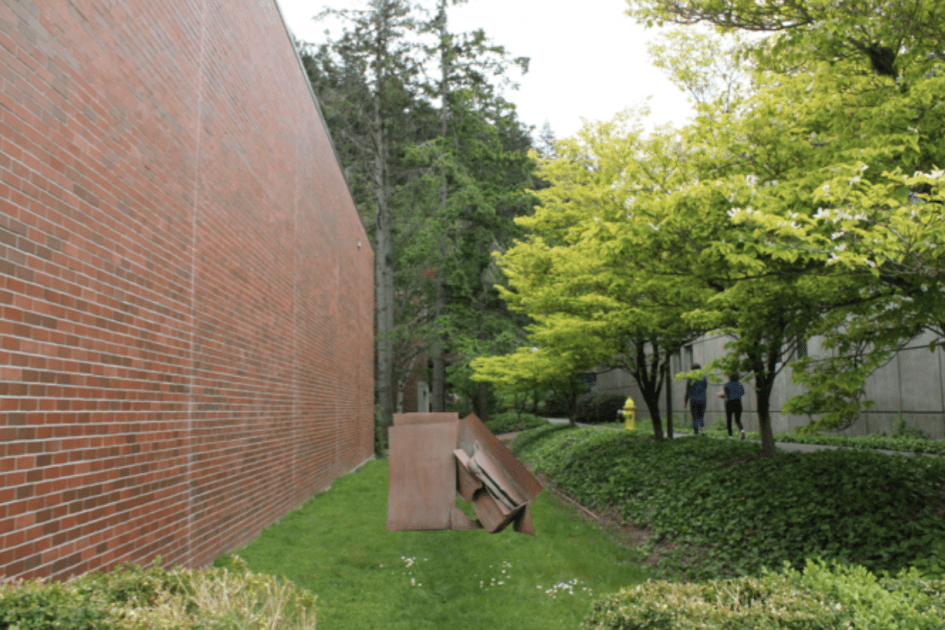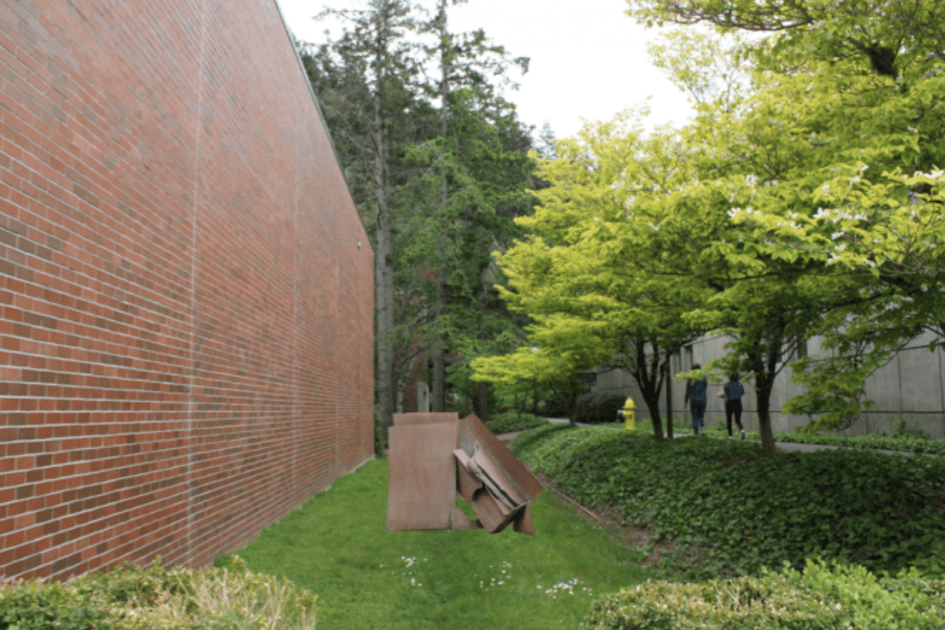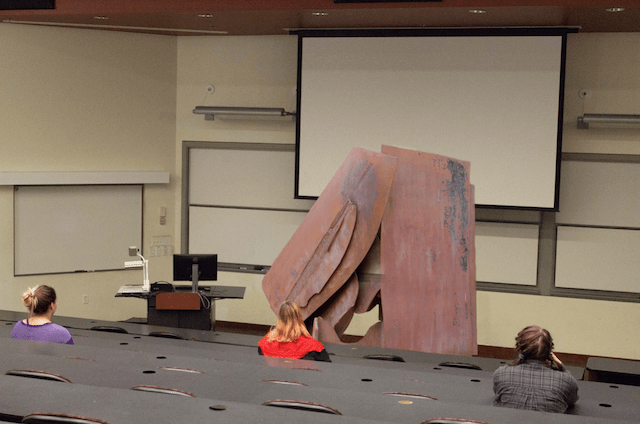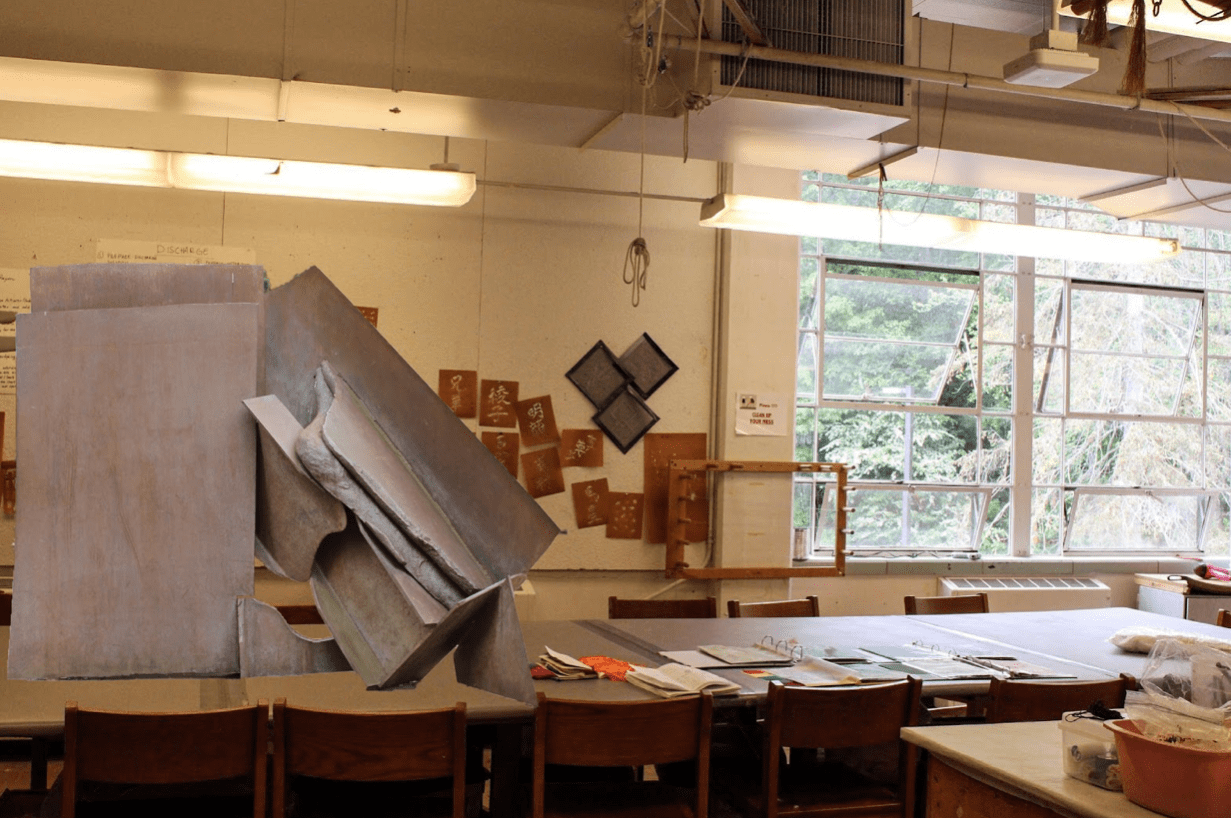India – Anthony Caro
The year is 1976. Outside Anthony Caro’s studio doors, culture and politics are booming.
Carter wins the US presidential election against Ford. The the first space shuttle is unveiled, the LAGEOS satellite is launched, and the Viking 1 lands on Mars. The “Son of Sam” attacks terrorize New York for months on end. The Cod Wars in England are announced to be over after years of fighting. An awful, record breaking drought forces the use of standpipes, and the world’s longest pier in Britain is destroyed in a fire. In Sudan, the world’s first Ebola virus epidemic is recorded. Canada announces that the CN Tower, the tallest free-standing structure in the world, is now finished. The Steel Crisis that began at the end of 1973 is still ongoing, the price of steel plummeting. “One Flew Over the Cuckoo’s Nest,” “Rocky,” and “The Omen” play in the movie theatre. Elton John, Queen, Abba, and Paul McCartney and Wings are playing on the radio. “The Jeffersons,” “M*A*S*H,” and “Good Times” flash across the television screen.
The decade ushers in photorealism, land art, feminist art, performance art, “California” art, and Gutai into the art world—responses to a rapidly changing global era. Shocking the public, these new art forms challenge ideas of high art and reshape the existing expectations of an artist: no longer is it necessary to use paint on an upright canvas to be recognized as an artist. Art, now free to be explored in a variety of mediums, is the most expressive it has ever been.
Anthony Caro (1923-2013) was an British sculptor who produced 6 decades of influential sculptural work. Throughout his career, he received many awards, honors, and accolades, and was even knighted. He taught sculpting for nearly 30 years at St Martin’s School of Art in London, where he integrated sculpture and drawing into a single class to encourage in his students a holistic understanding of the subject. 1960 marked an important year in Caro’s career, as he created his first abstract sculpture in steel, Twenty Four Hours (1961). Revising his teaching methods, he worked to create a more experimental atmosphere in his St Martin’s classroom, setting up a welding shop. Having studied engineering and architecture, Caro was a comfortable working with a variety of materials, including metals like steel, bronze, silver, and copper. The most obvious historical influence on Caro’s choice of steel as a medium was the global Steel Crisis from 1973 to the mid 1980’s. Because of a decline in demand for steel, manufacturers in America were forced to sell their steel at incredibly low prices, a trend Caro look advantage of.
Throughout his career, Caro created wholly abstract sculptural works, primarily out of steel. His works are dynamic, expressionistic, and question sculpture itself as an art form. His early works had anthropomorphic characteristics, particularly exploring the body’s weight, before moving into full abstraction. His works make us question what a sculpture can be made out of, what it can or should look like, and how it is experienced in relation to the space around it. Because his works have different features on all sides, the viewer is invited to move around the collaged sculpture. This commentary about boundaries between the viewer and the work make the setting of the piece as important as the work itself. One of Caro’s most innovative techniques was the integration of the spaces and surfaces around the sculpture into the work itself. He placed his works directly on the floor instead of on a platform. The sculpture is thus given its own space but remains separated from everything else by its otherness. In Caro’s work, sculptural logic is irrelevant, seen through tilted diagonal planes and unexpected protrusions.
In the 60s, early in his career with steel, Caro avoided any allusion to the figure in an effort to reimagine what we think of when we think about sculpture. This modern, minimalist aversion to the figure manifested itself through an avoidance of any verticality in his works; anything vertical resembles a figure. In the 70s he sought a more monumental impression from his work and transitioned into creating more upright works, including India in 1976. Influenced by the likes of Picasso, Caro often used non traditional methods to create his sculptures. He often began his sculptures on the ground before lifting them into the air to complete them, calling them “ground-flung.”
Caro’s work with abstraction and raw material reflects the broader shift in British sculpture in the 1950s-60s from figurative to non-figurative abstraction. His breakthrough 1963 Whitechapel Gallery exhibition (featuring Twenty Four Hours and other breakthrough works) represented a turning point in British sculpture in general. Sculptural works were no longer confined to being representational. They could be entirely abstract, not resembling anything else in the real world, but still evoking real response.
The Virginia Wright Fund gifted Caro’s India (1976) to Western Washington University in 1977. Because the interaction of landscape and artwork is so vital to Caro’s work, it is surprising that he did not choose the placement of India on the school’s campus. Atypical of Caro’s work, the piece is outdoors. It is relatively enclosed in a courtyard surrounded by three buildings, but still stands in unexpected conversation with all the stimuli of the outdoors. We were curious about this choice, and how the piece might have had a different impact on the viewer had it been placed elsewhere on our campus. For our group’s reinterpretation of the work, we photographed and photoshopped the sculpture into various locations around campus: an art workshop, a classroom, and in a thin outdoor walkway.
Credits
Justice Gilbert – research, photo editing
Madrona Jameson – research, final text composition/editing
Teigan Robertson – research, photography, photo editing
Carter Brantley – text editing, photo editing
Research citations:
“Anthony Caro Sculptures +, Bio, Ideas.” The Art Story, THE ART STORY FOUNDATION, 2019, www.theartstory.org/artist-caro-anthony.htm.
Baumgardner, Julie. “The 1970s.” Artsy, 11 Aug. 2015,
www.artsy.net/article/artsy-editorial-the-most-iconic-artists-of-the-1970s.
“Biography.” Anthony Caro, Barford Sculptures Ltd, 2019,
www.anthonycaro.org/biography.
“React. Research. Execute!” React Research Execute,
wp.wwu.edu/wwuart109/category/northcampus/caro/.
Wilkin, K., Riddy, J. and Barker, I. (1991). Caro. [Munich, Germany]: Prestel, pp.1-10.
Pearson, Steve. “What Happened in 1976 Important News and Events, Key
Technology and Popular Culture.” The People History, www.thepeoplehistory.com/1976.html.
Rowe, Daniel. “Lessons from the Steel Crisis of the 1980s.” The Conversation,
18 Sept. 2018, theconversation.com/lessons-from-the-steel-crisis-of-the-1980s-57751.
Waldman, Diane. Anthony Caro. Abbeville Press, 1982.








Leave a Reply